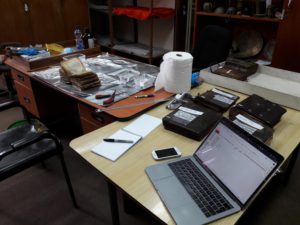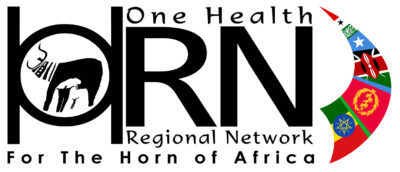
Manuscripts make up an essential part of the Ethiopian Cultural Heritage. Beyond that, they also represent a remarkable cultural and biological resource which can inform on life histories and husbandry practices of the source animals, manufacturing techniques and assembly of the document, its historic use, and preventive measures for conservation.
Whilst the earliest Ethiopian archaeological evidence of parchment-making dates back to the 1st millennium BC, Ethiopian manuscript studies have primarily focused on the descriptive aspects of these documents as well as modern manufacturing processes. It is generally believed traditional techniques have been retained throughout the last few thousand years, but this has seldom been explored. Parchments also possess their own distinct microbiome characterised by their manufacturing processes, history, usage and conservation methods. Through its exploration, one can assess health risks posed to museum staff when handling the material; some bacteria and species identified in European manuscripts have indeed been found to be harmful.
Through a joint collaboration with the Authorities for Research and Conservation of the Cultural Heritage (ARCCH), Addis Ababa, Ethiopia, fifteen samples from seven manuscripts held in the ARCCH collections are currently being analysed for genetic content. The aims of this novel approach to Ethiopian manuscript studies include:
- Characterising the manufacturing processes of Ethiopian manuscripts through time,
- Reconstruct the genetic diversity of past livestock populations used in parchment making,
- Evaluate the potential of recovering genetic material from ancient pathogens from this substrate,
- Provide a health and conservation assessment of the manuscript in their current storage conditions.
The Ethiopian climate is generally not favourable to ancient DNA survival in osteological remains, but manuscripts, given their legal or religious value, have been carefully curated and stored through time, often resulting in better preservation rates. Providing good genetic preservation of both source animal (endogenous) and external microorganism (exogenous) DNA within the selected parchments, this research will enrich our understanding of Ethiopian parchment-making practices and contribute to its preservation, as well as highlight potential issues with storage conditions and re-iterate relevant health and safety measures to be put in place. As an alternate substrate to bones, this research will also complement our other research on past genetic diversity and evolution of adaptation traits through time in local livestock, and ancient pathogen exploration.
